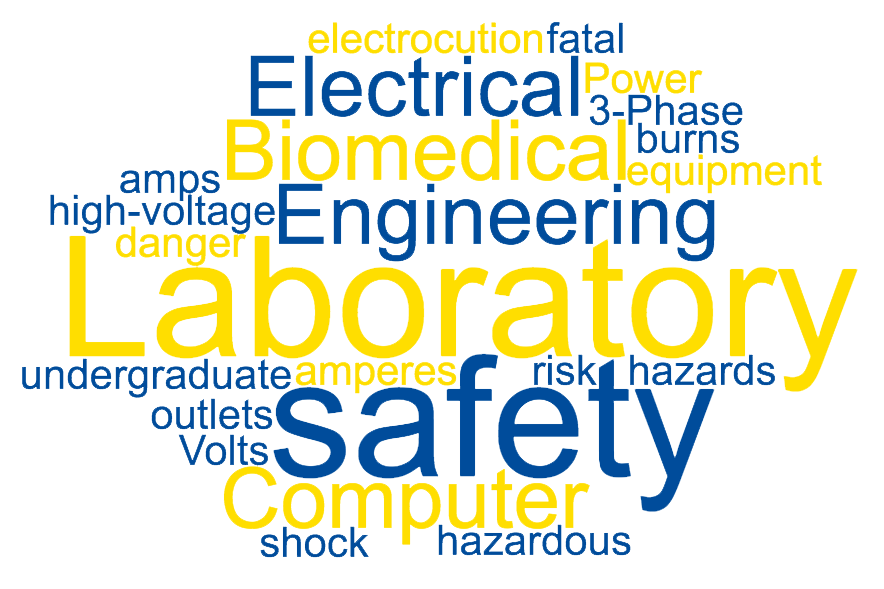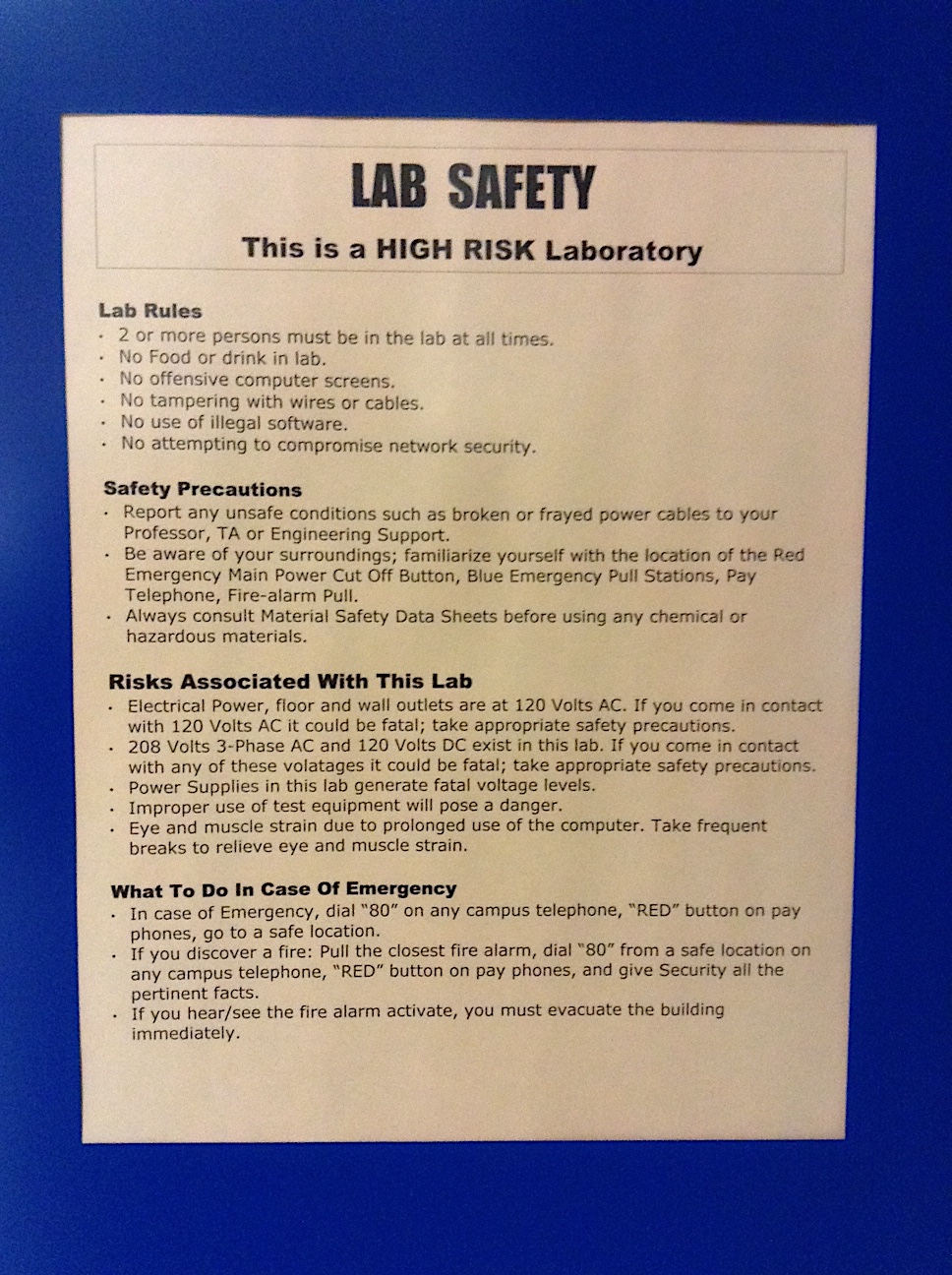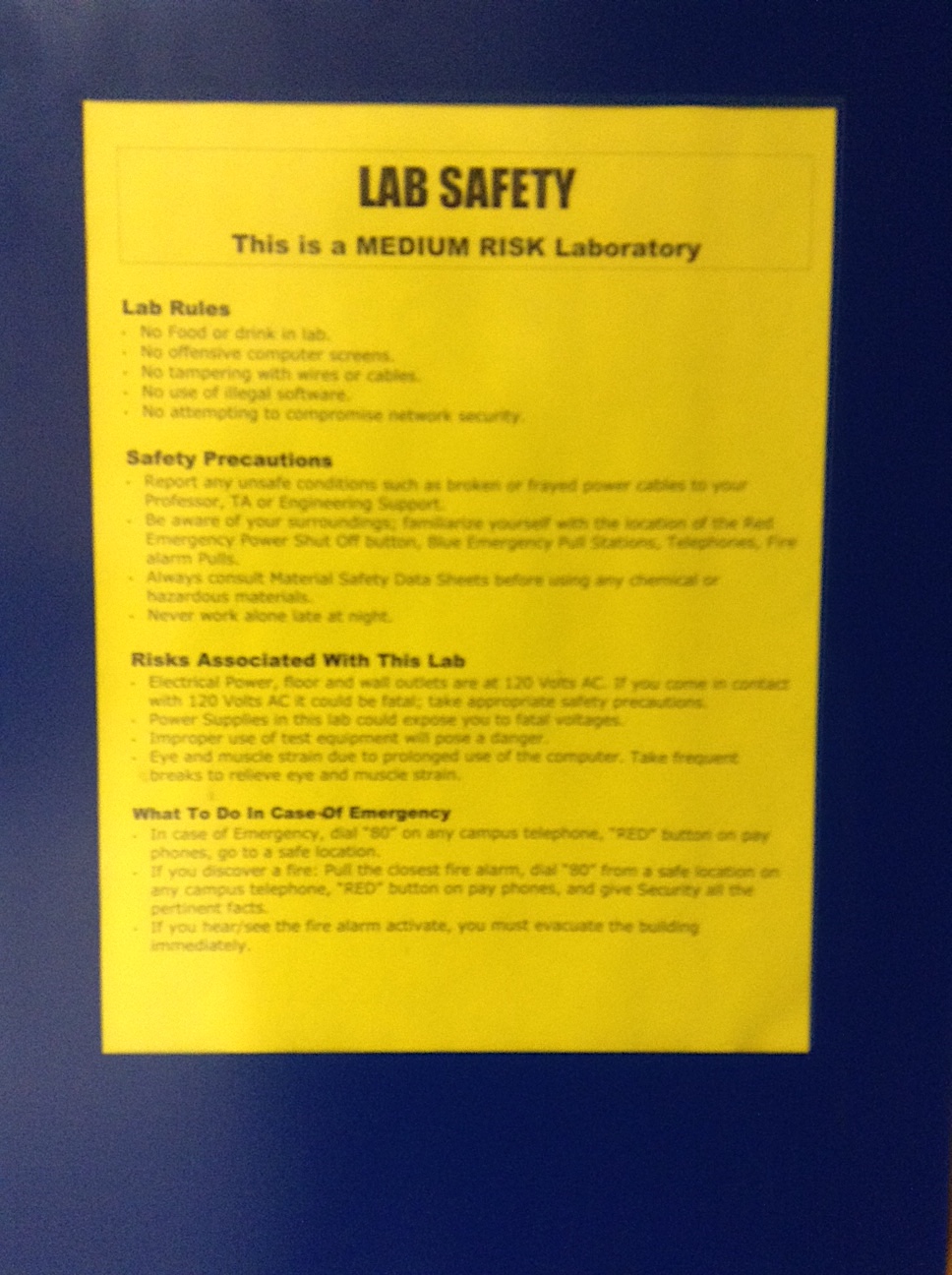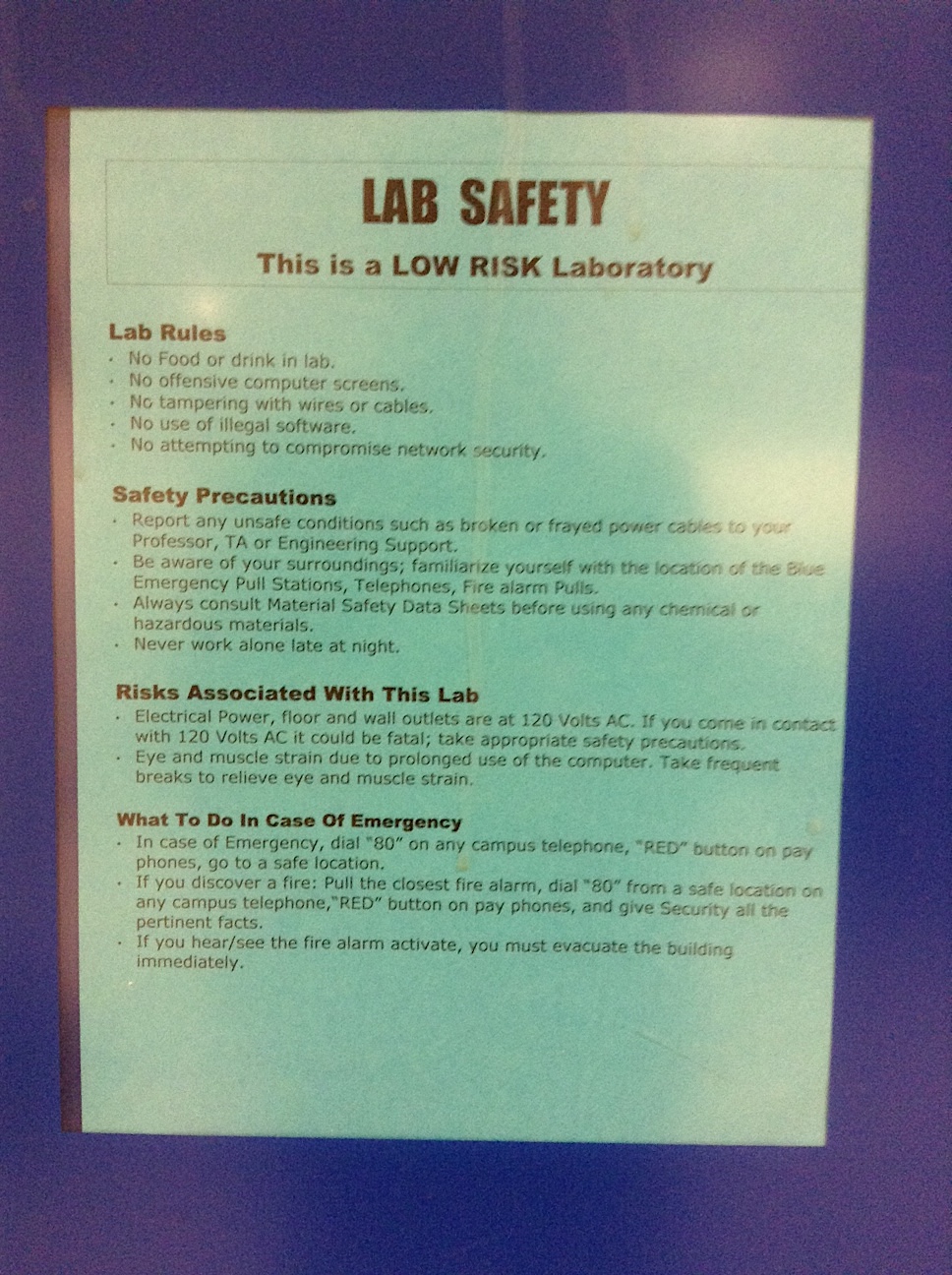Safety in the Laboratory
Several labs in the Electrical, Computer, and Biomedical Engineering department have equipment that can pose a danger if used improperly. All students, teaching assistants and faculty using the lab, should be aware of the risks that are present in the particular lab they are working in. Inside the main door of every lab in the department there are two posters— an information poster and a safety poster.
The information poster:
- outlines the general rules governing the use of the lab,
- lists networked printer names and locations,
- lists the name(s), telephone extension, office number and email address of the Engineering Support contact responsible for the equipment in the lab.
The colour-coded safety poster:
- lists the safety precautions that should be taken when using the lab,
- identifies the dangers and possible risks in that lab, and
- describes the procedures to follow in case of emergencies.
The safety posters are colour-coded based on the severity of the risk: high-risk labs are coded with RED POSTERS, medium-risk labs with YELLOW POSTERS and low-risk labs with GREEN POSTERS. The sections that follow, explain each type of environment.
 |
 |
 |
HIGH-RISK LABS (RED POSTER)
|
MEDIUM-RISK LABS (YELLOW POSTER)
|
LOW-RISK LABS (GREEN POSTER)
|
WHAT TO DO IN CASE OF EMERGENCY
|
The following instructions apply to all locations on campus:
|
SAFETY DEVICES IN LABS/BUILDING
|
Please be aware of the following emergency devices:
|
GENERAL SAFETY PRECAUTIONS
|
The following precautions apply to all labs:
|
GENERAL LAB RULES
The following rules apply to all labs:
- No food or drink allowed in the lab.
- No offensive computer screens.
- No tampering with wires or network cables.
- No use of illegal software.
- No attempting to compromise network security.
MACHINE USER GUIDE SOP
Machine User Guide Standard Operating Procedures.
General Safety Practices in the Laboratory
The Laboratories in the Electrical Department provide students with the best opportunity to gain practical knowledge. Students, Staff and Faculty should make themselves aware of the possible hazards that may be present in the laboratory. Following are some general guidelines that can be used to reduce the risk of injury caused by laboratory hazards.
- Know what you are working with and how to use it safely. Before beginning any new experiment, find out about the potential hazards involved and the appropriate safety precautions to follow.
- Perform only appropriate experiments, and be sure you understand the procedures involved before you begin. If anything unexpected, dangerous, threatening, or unmanageable happens, immediately call your instructor or the lab staff personnel.
- Use fume hoods or other necessary engineering controls when handling toxic materials.
- Wear the proper protective clothing and equipment for each job. This should include eye protection and may include:
- face shields or safety glasses (students are required to provide their own safety glasses).
- lab coats or aprons (students are required to provide their own lab coats).
- gloves to protect the hands from sharp edges, chemicals or hazardous materials.
- hearing protection.
- Students who are not appropriately attired will not be allowed to perform experimental procedures. Clothing that unduly exposes limbs to splash or drop hazards should not be worn i.e. Shorts, halter tops, sandals and open-toed shoes. Loose clothing and long hair should be confined to avoid contact with hazardous materials, equipment, rotating machinery, or heat sources such as soldering irons or open flame.
- Contact lenses can be a serious problem in the laboratory, as they can trap chemicals next to the eye, and are difficult to remove in case of a splash accident. We strongly suggest that they not be used when in lab.
- Never eat, drink, smoke or chew gum around chemicals or hazardous materials, and always wash hands thoroughly before touching food or cigarettes. Food and drink (including water) are not to be brought into the lab at any time.
- Keep work areas clean and free from obstructions. Backpacks and coats should be put away.
- Cleanup should follow the completion of any experiment, return leads etc. to wall racks.
- All chemical containers should be correctly and clearly labeled.
- Be familiar with emergency procedures; know the location of, and how to use, the nearest emergency equipment. Note the locations of fire extinguishers. (These should only be used on small fires, make sure the extinguisher is rated for type of fire.) Also note the location of fire alarm pull boxes. Upon hearing a fire alarm, all persons must leave the building. Leave quickly, making sure doors are closed. Don't use the elevator during a fire.
- Follow the prescribed hazardous waste disposal procedures as outlined in Facilities Management and Development: Chemical Safety : Standard operating procedures : Disposing of hazardous material
- Be alert to unsafe conditions and call attention to them so corrections can be made as soon as possible. Report any accident, unusual occurrence, or injury immediately. First Aid Kits for minor injuries, are located in ENG478 (main office), ENG439 (engineering support) and ENG418 (Jim Koch). All injuries should be checked by Health Services.
- Remove all broken glass from work area or floor as soon as possible. Never handle broken glass with bare hands (use dustpan and broom). Place broken glass in cardboard box and mark as such. Notify lab staff for disposal.
- Spills and leaks must be cleaned up without delay. Check with the lab staff for help in cleaning up special situations.
- Students may not work alone in labs.
- In the event of a medical or personal emergency STAY CALM AND CALL 911. For further information see Community Safety and Security: Medical Emergencies.
- Hazardous materials likely to be found in the labs. Lead/Tin solder, solder flux remover, Humidity calibration Salts and Circuit Board Fabrication Chemicals such as developer, ammonium persulphate etch, cold tin plating solution. Read the Safety Data Sheet (SDS) before handling/using. Printed copies of SDS's can also be found in ENG418.
- THINK SAFETY!
